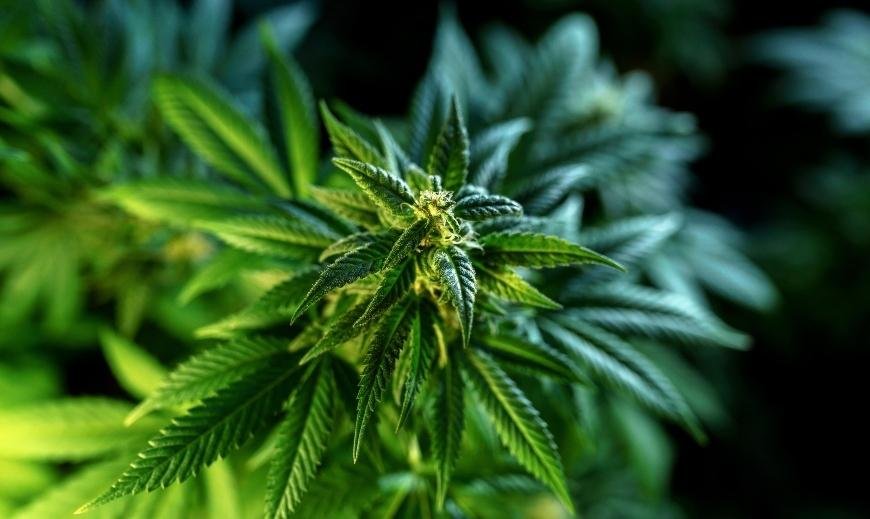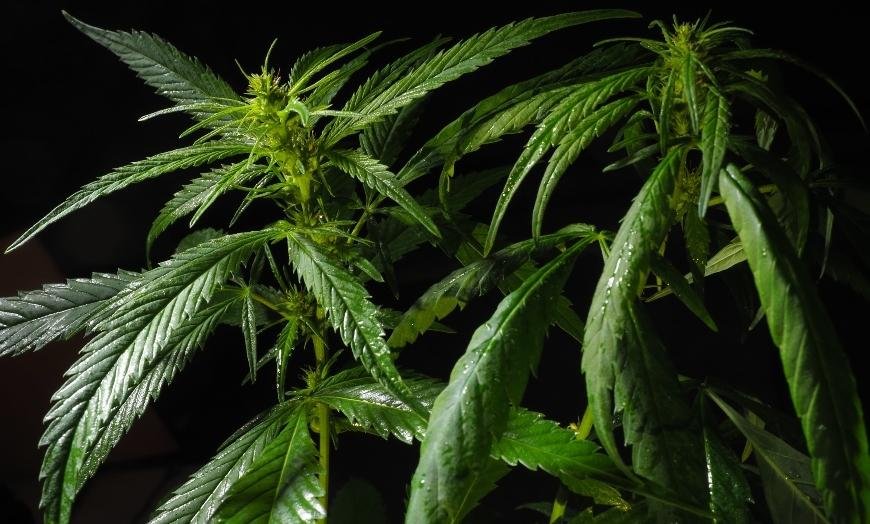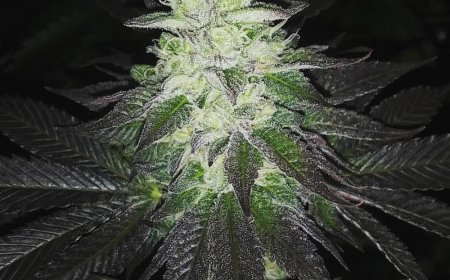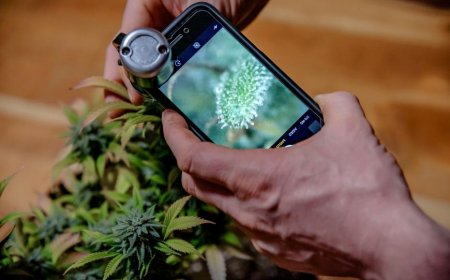Sherbacio Strain
The euphoric high of the Sherbacio Strain, its rich history and genetics, plus essential growing tips for this Gelato #41 and Sunset Sherbet hybrid.

If you're intrigued by the world of cannabis strains, then sherbacio strain is one that should definitely be on your radar. This unique and potent hybrid offers a delightful combination of effects and flavors that make it highly sought after among recreational users. In this blog post, we will delve into the fascinating history, genetics, lineage, growing process, THC and CBD levels, as well as the flavor profile of this remarkable strain.
As we explore the origins of sherbacio strain in our history section, you'll discover how it came to prominence within the cannabis community. We'll also discuss its complex genetic makeup involving gelato #41 and sunset sherbet – two popular parent strains known for their exceptional qualities.
In addition to understanding its background story and lineage, learning about proper cultivation techniques is crucial for any enthusiast looking to grow this incredible plant. Our guide on growing sherbacio strain will provide valuable insights into achieving optimal results from your own garden or indoor setup.
Table of Contents:
- Overview of Sherbacio Strain
- History of Sherbacio Strain
- Genetics and Lineage of Sherbacio Strain
- Growing the Sherbacio Strain
- THC, CBD and Other Cannabinoid Levels of Sherbacio Strain
- Effects of Sherbacio Strain
- Flavor of Sherbacio Strain
- FAQs in Relation to Sherbacio Strain
- Conclusion
Overview of Sherbacio Strain
If you're looking for a strain that can instantly uplift your mood and bring positivity to your day, look no further than Sherbacio. This delightful hybrid is the perfect blend of two popular strains: Sunset Sherbert and Gelato #41. Known for its mouthwatering terpene profile, Sherbacio offers users an unforgettable experience with its sweet candy flavor followed by a gassy finish.
The buds of the Sherbacio strain are dense, boasting rich purple hues that shimmer with an abundance of trichomes. The appearance alone makes it an attractive choice for cannabis enthusiasts who appreciate visually appealing flowers. When it comes to aroma, expect a mix of fruity sweetness combined with earthy undertones - making this strain as enjoyable to smell as it is to consume.
- Sunset Sherbert, one parent strain in this crossbreed, is known for its uplifting effects on mood while also providing relaxation without sedation.
- Gelato #41, the other parent in this pairing, brings potent THC levels which contribute to feelings of euphoria and happiness alongside physical relaxation.
Together, these strains create a powerful combination that provides both mental clarity and physical relief - ideal for those seeking balance during their daily routine or simply wanting some respite from stressors they may be facing throughout their day. The euphoric high that Sherbacio provides is perfect for those who want to feel happy and relaxed without feeling sedated.
The sherbacio strain is a unique and powerful hybrid of indica and sativa that has gained popularity in recent years. Its effects are diverse, making it an appealing selection for those seeking recreational use. With its history dating back to the early 2000s, let's take a closer look at how this strain came to be.
History of Sherbacio Strain
The history of the Sherbacio strain is a fascinating tale that begins with its parent strains, Sunset Sherbert and Gelato #41. These two popular cannabis varieties were bred together by the talented team at Alien Labs, resulting in a unique hybrid that boasts an incredible terpene profile and potent effects.
Sunset Sherbert, also known as "Sherbinski," was created by Mr. Sherbinski himself - a renowned breeder who has worked on some of the most iconic strains in recent years. This indica-dominant hybrid is derived from Girl Scout Cookies (GSC) and Pink Panties, making it famous for its fruity flavor profile and relaxing effects.
On the other hand, Gelato #41 comes from another legendary breeder, Cookie Fam Genetics. It's one of many phenotypes within the Gelato family tree - each boasting their own unique characteristics while sharing common traits like high THC levels and sweet flavors reminiscent of dessert treats. The specific lineage behind Gelato #41 includes Thin Mint GSC crossed with Sunset Sherbert.
- Breeder: Alien Labs
- Mother Strain: Sunset Sherbert (Girl Scout Cookies x Pink Panties)
- Father Strain: Gelato #41 (Thin Mint GSC x Sunset Sherbert)
In combining these two powerhouse strains, Alien Labs sought to create something truly special: A balanced hybrid offering both uplifting mental stimulation alongside deep physical relaxation - perfect for those seeking relief from stress or simply looking to elevate their mood. Thus, the Sherbacio strain was born, capturing the hearts and minds of cannabis enthusiasts around the world.
The history of the sherbacio strain is a long and varied one, tracing its origins back to some of the earliest known cannabis strains. A legacy of cultivation and breeding has been preserved through the ages, yielding a one-of-a-kind strain with remarkable potency that still enthralls fans today. Moving on from this rich past, let us now explore the genetics and lineage of sherbacio strain further.
Genetics and Lineage of Sherbacio Strain
The Sherbacio strain is a masterpiece created by the skilled breeders at Alien Labs. This potent hybrid boasts an impressive genetic lineage, resulting from the cross between two highly sought-after strains: Sunset Sherbert and Gelato #41.
Sunset Sherbert, also known as "Sherbet," is an indica-dominant hybrid that was developed by Mr. Sherbinski. It descends from the legendary Girl Scout Cookies (GSC) family, inheriting its unique terpene profile and delivering a complex mix of sweet, fruity flavors with hints of earthiness.
Gelato #41, often referred to simply as "Gelato," is another member of the GSC family tree. Bred by Cookie Fam Genetics, this slightly indica-leaning hybrid combines Thin Mint GSC with Sunset Sherbert for a deliciously dessert-like flavor profile that has quickly become popular among cannabis connoisseurs.
By combining these two powerhouse strains, Alien Labs has crafted a remarkable new strain in its own right - one that offers both tantalizing tastes and powerful effects sure to please even the most discerning palate. The result? A truly memorable experience every time you light up some sticky buds loaded with glistening trichomes.
The genetics and lineage of sherbacio strain have been studied extensively, with its origins tracing back to the indica-dominant hybrid. Cultivating this variety is a fantastic way for recreational cultivators to enjoy top-notch cannabis without having to splurge on pricey gear or methods.

Growing the Sherbacio Strain
The Sherbacio strain is an easy plant to grow, making it an excellent choice for both novice and experienced cultivators. To achieve the best results when growing this strain, follow these tips:
Sherbacio can be grown indoors or outdoors, but indoor cultivation offers better control over environmental factors such as temperature and humidity. This helps ensure optimal growth conditions for your plants.
This strain thrives in rich, well-draining soil with a pH level between 6.0-7.0. Be sure to provide your plants with essential nutrients like nitrogen, phosphorus, potassium, calcium, magnesium, and sulfur throughout their growth cycle.
To maximize yield potential when growing indoors under artificial lighting systems such as LED or HID lights (high-intensity discharge), maintain a consistent light schedule of 18 hours on / 6 hours off during the vegetative stage followed by 12 hours on / 12 hours off during flowering.
- Maintain temperatures between 70°F -80°F (21°C -27°C) during the daytime.
- Nighttime temperatures should not drop below 60°F (15°C).
- Control humidity levels, keeping them around 40%-50% during the flowering phase to prevent mold formation.
To increase yield, apply pruning and training techniques such as topping, low-stress training (LST), or the Screen of Green (SCROG) method.
By following these guidelines, you can successfully cultivate a healthy crop of Sherbacio plants with dense buds full of rich terpenes and potent effects. The Sherbacio strain is a cross between Gelato #41 and Sunset Sherbet, resulting in an euphoric high that is perfect for relaxation and stress relief.
The cultivation of the sherbacio strain requires knowledge and expertise, but with proper care it can produce a rewarding crop. Moving on to the next heading, we will explore the THC, CBD and other cannabinoid levels found in this particular strain.
THC, CBD and Other Cannabinoid Levels of Sherbacio Strain
The Sherbacio strain is known for its potent effects, which can be attributed to its impressive cannabinoid profile. This strain packs a powerful punch, with THC levels ranging from 20-26%. The high THC levels make it an excellent choice for recreational users seeking an uplifting and euphoric high.
On the other hand, Sherbacio has relatively low CBD levels, typically less than 1%. This means that while it may not be the best option for those seeking medicinal benefits from CBD specifically, the combination of cannabinoids present in this strain still offers therapeutic potential. For example, some users report relief from symptoms such as chronic pain or anxiety when using Sherbacio.
- CBD (cannabidiol): <1%
- THC (tetrahydrocannabinol): 20%-26%
In addition to the 1% THC and 20-26% CBD, Sherbacio also contains various minor cannabinoids such as CBG and CBN, plus terpenes like limonene and myrcene that work together in a synergistic manner known as the "entourage effect" for an enhanced experience. The synergistic interaction of these compounds creates a phenomenon referred to as the "entourage effect", which amplifies their respective effects and produces an overall more balanced experience.
Overall, Sherbacio's cannabinoid profile makes it a popular choice among recreational users looking for an uplifting and potent strain. However, its low CBD content means that those seeking medicinal benefits from CBD alone may want to explore other options. If you're looking for a similar strain with higher CBD levels, you may want to try Gelato #41 or Sunset Sherbet.
The sherbacio strain has a unique cannabinoid profile, with high levels of THC and CBD as well as other cannabinoids. This provides users with an enhanced experience compared to many other strains on the market today. Moving forward, we'll explore the effects that this strain can have on its consumers.
Effects of Sherbacio Strain
If you're looking for a strain that will uplift your mood and provide an enjoyable experience, look no further than the Sherbacio strain. This hybrid cannabis variety is known for its potent effects that combine both mental stimulation and physical relaxation. Let's dive into what you can expect when consuming this delightful strain.
One of the most notable effects of Sherbacio is its ability to boost your mood and increase creativity. Thanks to its lineage from Sunset Sherbet and Gelato #41, users often report feeling more focused, energized, and inspired after consumption. Whether you need help with brainstorming ideas or simply want to enjoy a pleasant conversation with friends, Sherbacio by Alien Labs has got you covered.
In addition to mental stimulation, Sherbacio also provides soothing physical effects. As a balanced hybrid strain (with typically around 50% indica genetics), it delivers full-body relaxation without causing excessive sedation or couch-lock. For those seeking a balanced combination of physical relaxation and mental stimulation, Sherbacio is an ideal choice that won't leave them too sedated to function.
Overall, the Sherbacio strain offers a delightful combination of mental stimulation and physical relaxation that makes it an ideal choice for those seeking a positive shift in mood. Give it a try and experience its uplifting effects for yourself.
The effects of sherbacio strain are both calming and energizing, making it a popular choice for recreational users. With its unique flavor profile, the next heading will explore what makes this strain so special.
Flavor of Sherbacio Strain
This tantalizing taste sensation starts with a sweet candy-like burst, reminiscent of the Sunset Sherbet parentage, followed by a gassy finish inherited from the Gelato #41.
In addition to THC and CBD levels, terpenes play an essential role in determining not only flavor but also effects experienced when consuming cannabis strains like Sherbacio. Some dominant terpenes found in this particular strain include Myrcene (known for promoting relaxation), Limonene (which contributes citrusy notes), and Caryophyllene (responsible for spicy tones) among others. To learn more about how these compounds work together synergistically within different strains, check out our article on "The Importance of Terpenes in Cannabis".
Overall, the Sherbacio strain offers a unique and delectable flavor experience that is sure to please even the most discerning cannabis connoisseurs. Its euphoric high and delicious taste make it a popular choice among cannabis enthusiasts. If you're looking for a strain that will tantalize your taste buds and provide a relaxing, uplifting experience, Sherbacio is definitely worth trying.

FAQs in Relation to Sherbacio Strain
What Strain is Sherbacio?
Sherbacio is a hybrid cannabis strain that combines the genetics of Sunset Sherbet and Gelato 41. It has gained popularity for its unique flavor profile, potent effects, and beautiful appearance with dense buds covered in trichomes.
Is Sherbacio a Hybrid?
Yes, Sherbacio is a hybrid strain that results from crossing two well-known strains: Sunset Sherbet and Gelato 41. This combination creates a balanced blend of indica and sativa characteristics, providing users with both relaxing body effects and uplifting cerebral stimulation.
What is the Strongest Indica Strain in the World?
While it's difficult to pinpoint one specific "strongest" indica strain due to variations in cultivation techniques and individual preferences, some contenders include G-13, Kosher Kush, and Godfather OG. These strains are known for their high THC content (upwards of 25%) as well as their powerful sedative effects.
What is the Strongest Sativa Strain in the World?
Similar to indicas, identifying one definitive "strongest" sativa can be challenging. However, some notable candidates include Strawberry Cough and Ghost Train Haze, which boast high THC levels (over 25%) along with energetic cerebral highs characteristic of strong sativas.
Experience the Euphoric High of Sherbacio
If you're looking for a strain that offers a euphoric high, Sherbacio is a great choice. With its balanced blend of indica and sativa effects, this hybrid provides a relaxing body buzz and uplifting cerebral stimulation. Plus, its unique flavor profile and beautiful appearance make it a favorite among cannabis enthusiasts.
Conclusion
Overall, the Sherbacio strain is a popular choice among young adults who enjoy growing and consuming cannabis. Its genetics and lineage make it a unique hybrid with high THC levels that produce a potent and euphoric high. The flavor profile of Sherbacio is also highly sought after by those who appreciate its sweet and fruity taste, reminiscent of gelato #41 and sunset sherbet.






































































































































